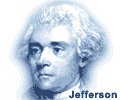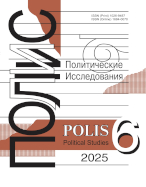Armenian Nationalism vs. Armenian State:
Cleavages and Coalitions in the Discourses on Sasna Tsrer
Fomin I.V.,
Researcher, Immanuel Kant Baltic Federal University; Associate Professor, National Research University Higher School of Economics; Researcher, Institute of Scientific Information for Social Sciences, RAS, fomin.i@gmail.com
elibrary_id: 638552 | ORCID: 0000-0003-4703-5262 | RESEARCHER_ID: R-8897-2016
Silaev N.Yu.,
Senior Researcher, MGIMO-University, nikolai.silaev@gmail.com
elibrary_id: 435265 |
DOI: 10.17976/jpps/2018.03.06
Fomin I.V., Silaev N.Yu. Armenian Nationalism vs. Armenian State: Cleavages and Coalitions in the Discourses on Sasna Tsrer. – Polis. Political Studies. 2018. No. 3. https://doi.org/10.17976/jpps/2018.03.06
The article is devoted to the analysis of the discursive practices of Armenian nationalism that were used in media during the acute political crisis caused by the terroristic attack of Sasna Tsrer armed group in July 2016. 316 messages from Armenian mass media were analysed in order to define the groups of speakers (“coalitions”) who used one of three major discursive strategies of representation of Sasna Tsrer: 1) approval, 2) justification or 3) condemnation. The composition and structure of each coalition was examined by mapping the social ties of speakers. The “condemnation coalition” mainly consisted of high-ranked state bureaucrats and members of the ruling parliamentary coalition, while the “approval coalition” mostly included liberal and nationalistic political parties and NGO representatives, Armenian diaspora members, influential performing artists and some Nagorno-Karabakh war veterans. Quantitative analysis showed that it was the “approval coalition” that dominated in the media discourse, while the condemnation strategy was marginalized. In R. Brubaker’s terms, interpretative battle for the denomination and definition of the armed group’s actions was lost by the ruling Armenian elites. Two competing interpretative frames clashed in the discourses on Sasna Tsrer. One of them is the statist frame (connected to condemnation strategy) and the other is counter-statist (connected to the strategy of approval). These two frames directly correspond to the two types of nationalist doctrines and movements, outlined by R. Brubaker, – the state-framed and the counter-state ones. Paradoxically in the studied case both types of nationalism appeal to the same nation, the Armenian one. It was B. Anderson who also noticed the ambivalent nature of nationalism, as it can be both a revolutionary force and a stabilizing one, but in the Armenian case this ambivalence is accompanied by a specific constellation of different types of capital (by P. Bourdieu). The analysis of the discourse of Sasna Tsrer shows that those who hold political and economic capital fail to convert it to symbolic capital, because of the weakness of the etatist frame on nation. At the same time the symbolic capital holders who position themselves discursively through the counter-etatist frame are deprived of political and economic capital.
References
Anderson B. Imagined Communities: Reflections on the Origin and Spread of Nationalism. (Russ. ed.: Anderson B. Voobrazhaemye soobshchestva. Razmyshleniya ob istokakh i rasprostranenii natsionalizma. Moscow: KANON-Press-Ts; Kuchkovo pole. 2001. 288 p.)
Bourdieu P. O simvolicheskoi vlasti [On Symbolic Power]. – Sotsiologiya sotsial’nogo prostranstva [Sociology of Social Space]. Saint Petersburg: Aletheia. 2014. P. 87-96. (In Russ.)
Broers L., Iskandaryan A., Minasyan S. The Unrecognized Politics of De Facto States in the Post-Soviet Space. Yerevan: Caucasus Institute and International Association for the Study of the Caucasus. 2015. 238 p.
Brubaker R. Ethnicity without groups. (Russ. ed.: Brubaker R. Etnichnost’ bez grupp. Moscow: Izdatel’skii dom Vysshei shkoly ekonomiki. 2012. 408 p.)
Calhoun C. Nationalism. (Russ. ed.: Calhoun C. Natsionalizm. Moscow: Territoriya budushchego. 2006. 288 p.)
Derlug’yan G. Adept Burd’e na Kavkaze: eskizy k biografii v mirosistemnoi perspektive [Bourdieu’s Adherent in the Caucasus: Sketches to the Biography in the World-System Perspective]. Moscow: Territoriya budushchego. 2010. 558 p. (In Russ.)
Derlug’yan G. How to Oust the President Democratically With a Bomb. – PONARS Eurasia. 29.07. URL: (In Russ.) http://www.ponarseurasia.org/ru/article_20160729_Derluguian (accessed 05.05.2017).
Fairclough N. Discourse and Social Change. Cambridge: Polity Press. 1992. 259 p.
Furman D. Kul’turnye i sotsial’no-psikhologicheskie osnovy sovremennogo armyanskogo natsional’nogo dvizheniya [Cultural and Socio-Psychological Foundations of the Contemporary Armenian National Movement]. Moscow: Gorbachev-Fund. 1993. 38 p. (In Russ.)
Goffman E. Frame Analysis: An Essay on the Organization of Experience. (Russ. ed.: Goffman E. Analiz freimov: esse ob organizatsii povsednevnogo opyta. M.: Institut sotsiologii RAN. 2003. 752 p.)
Iskandaryan A., Mikaelian H., Minasyan S. War, Business and Politics: Informal Networks and Formal Institutions in Armenia. Yerevan: Caucasus Institute. 2016. 144 p.
Nzhde G. (Garegin Ter-Arutyunyan). Otkrytye pis’ma armyanskoi intelligentsii [Open Letters to the Armenian Intelligentsia]. Yerevan: Armyanskaya revolyutsionnaya federatsiya “Dashnaktsutyun”. 1992. 21 p. (In Russ.)
Panossian R. The Armenians: From Kings and Priests to Merchants and Commissars, London: Hurst & Co. 2006. 442 p.
Reisigl M., Wodak R. Discourse and Discrimination: Rhetorics of Racism and Antisemitism. London: Routledge. 2001. 298 p. https://doi.org/10.4324/9780203993712
Semenenko I.S., Lapkin V.V., Bardin A.L., Pantin V.I. Between the State and the Nation: Dilemmas of Identity Policy in Post-Soviet Societies. – Polis. Political Studies. 2017. No. 5. P. 54-78. (In Russ.) https://doi.org/10.17976/jpps/2017.05.05
Suny R.G. Looking Toward Ararat: Armenia in Modern History. Bloomington: Indiana University Press. 1993. 304 p.
Vakhshtayn V.S. Frame Analysis as Political Theory. – Sociology of Power. 2013. No. 4. P. 13-44. (In Russ.)
Volkov V.V., Kharkhordin O.V. Teoriya praktik [Theory of Practices]. Saint Petersburg: EUSP Press. 2008. 298 p. (In Russ.)
Zolyan S. On the Dynamic Approach to the Notion of National Identity (Armenian Identity Case Study). – SOTIS – sotsial’nye tekhnologii, issledovaniya. 2017. No. 1. P. 11-17. (In Russ.)
See also:
Atanesyan A.V.,
“Velvet Revolution” in Armenia: Potential, Gains and Risks of Political Protest Activity. – Polis. Political Studies. 2018. No6
Semenenko I.S., Lapkin V.V., Bardin A.L., Pantin V.I.,
Between the State and the Nation: Dilemmas of Identity Policy in Post-Soviet Societies. – Polis. Political Studies. 2017. No5
Lantzov S.A.,
The second Karabakh war: background, causes, consequences. – Polis. Political Studies. 2022. No3
Sarkisyan H.L., Dunamalyan N.A.,
The Dynamics of Civil Identity Transformation in Modern Armenia: Factors and Subjects. – Polis. Political Studies. 2020. No2
Timofeyeva L.N., Ryabchenko N.A., Malysheva O.P., Gnedash A.A.,
The digital socio-political agenda and its conceptualization within the new media ecology framework. – Polis. Political Studies. 2022. No2




.jpg)






 print
print
.jpg)
.jpg)